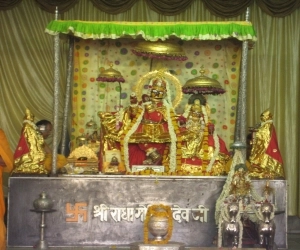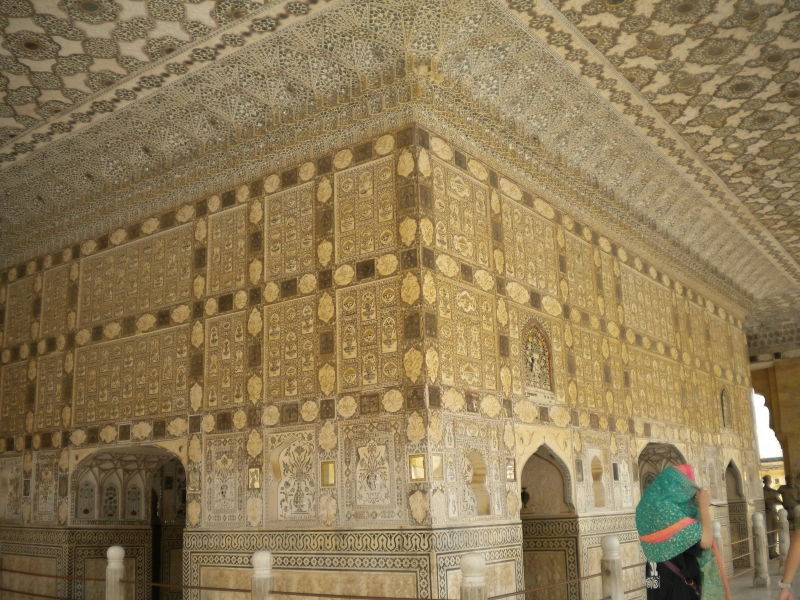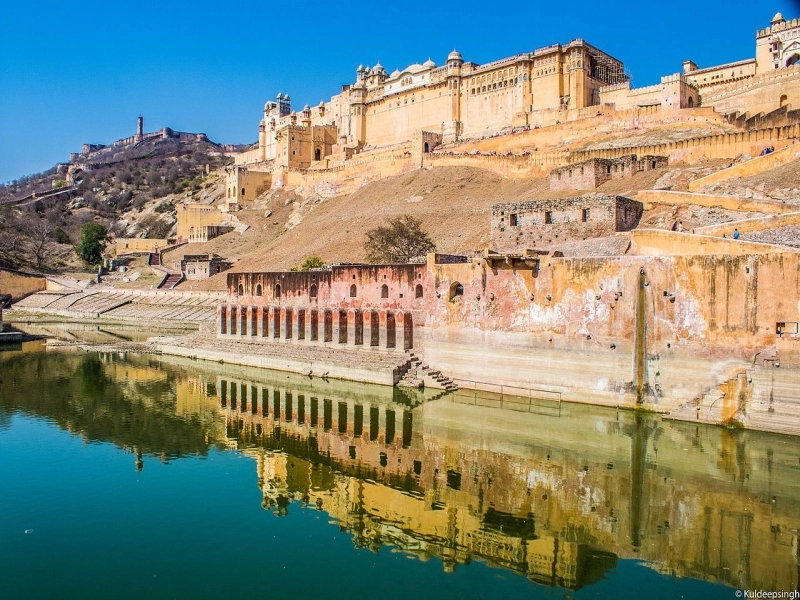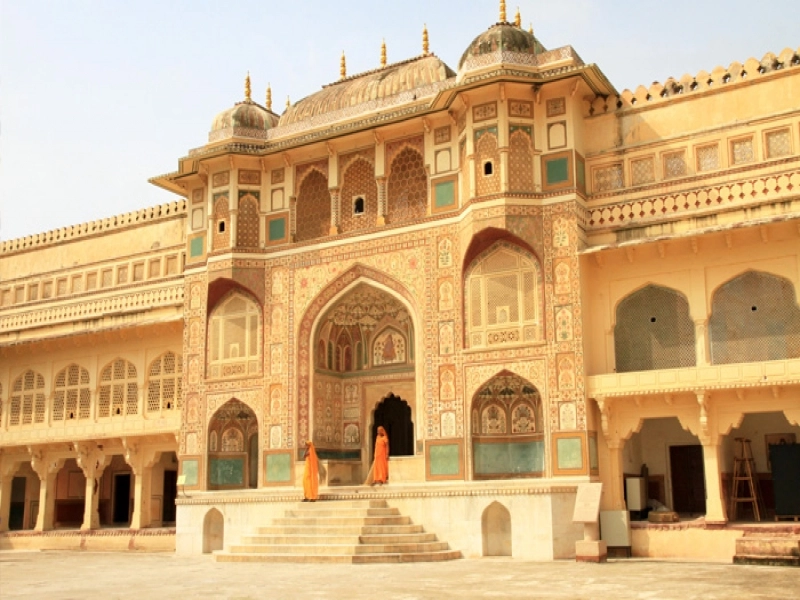Jaipur is a city that captivates visitors with its royal charm, vibrant culture, and architectural marvels. Whether you're a history buff, a foodie, or a shopaholic, Jaipur has something for everyone!
About Jaipur
Jaipur, the capital and largest city of Rajasthan, India, is famously known as the Pink City due to its distinctive pink-colored buildings. Founded on 18 November 1727 by Maharaja Sawai Jai Singh II, the city is a harmonious blend of history, culture, and modernity. With a population of 3.1 million, Jaipur is a bustling metropolis and a major tourist destination, forming part of the Golden Triangle Tourist Circuit alongside Delhi and Agra. The city is renowned for its wide, grid-patterned streets, stunning architecture, and vibrant culture.
History of Jaipur
Jaipur was established in 1727 by Maharaja Sawai Jai Singh II, the ruler of Amber, to address the growing population and water scarcity in Amber. Designed by Vidyadhar Bhattacharya, a scholar and architect, the city was planned based on Vastu Shastra and Shilpa Shastra, ancient Indian architectural principles. The city was divided into nine blocks, with two dedicated to palaces and state buildings, and the remaining seven for public use.
In 1876, the city was painted pink to welcome Edward, Prince of Wales, earning it the nickname Pink City. Jaipur flourished in the 19th century, with advancements in infrastructure, education, and industry. Today, it stands as a testament to the grandeur of Rajasthan's royal heritage.
Culture of Jaipur
Jaipur is a cultural hub, reflecting the rich traditions of Rajasthan. The city is known for its folk music, dance, and art. Traditional festivals like Teej, Gangaur, and Diwali are celebrated with great enthusiasm. Jaipur is also famous for its handicrafts, including block printing, blue pottery, and gemstone jewelry. The city hosts the Jaipur Literature Festival, one of the largest literary festivals in the world, attracting global audiences.
Top Attractions in Jaipur
-
Hawa Mahal: The iconic "Palace of Winds," known for its intricate latticework.
-
Amber Fort: A majestic fort with stunning architecture and panoramic views.
-
City Palace: A blend of Mughal and Rajasthani architecture, housing museums and royal artifacts.
-
Jantar Mantar: A UNESCO World Heritage Site, featuring astronomical instruments.
-
Nahargarh Fort: Offers breathtaking views of the city and a glimpse into royal history.
-
Jaigarh Fort: Known for its massive cannon, Jaivana, and military history.
-
Albert Hall Museum: The oldest museum in Rajasthan, showcasing art and artifacts.
-
Birla Mandir: A beautiful white marble temple dedicated to Lord Vishnu and Goddess Lakshmi.
Eat in Jaipur
Jaipur is a paradise for food lovers, offering a mix of traditional Rajasthani cuisine and modern delicacies. Must-try dishes include:
-
Dal Baati Churma: A classic Rajasthani dish.
-
Laal Maas: Spicy mutton curry.
-
Ghewar: A sweet dessert.
-
Pyaaz Kachori: Flaky pastry filled with spiced onions.
Popular eateries include Chokhi Dhani, Laxmi Misthan Bhandar (LMB), and Rawat Mishtan Bhandar.
Travel in Jaipur
Jaipur is well-connected by air, rail, and road. The Jaipur International Airport serves domestic and international flights. The city has a robust public transport system, including buses, auto-rickshaws, and taxis. For a royal experience, tourists can opt for heritage walks or elephant rides at Amber Fort.
Shopping in jaipur
Jaipur is a shopper's delight, offering everything from traditional handicrafts to modern fashion. Popular shopping destinations include:
-
Johari Bazaar: For gemstones and jewelry.
-
Bapu Bazaar: For textiles and footwear.
-
Tripolia Bazaar: For lac bangles and brassware.
-
Chandpole Bazaar: For blue pottery and marble items.
Nightlife in Jaipur
While Jaipur is not known for a bustling nightlife, it offers a few options for evening entertainment:
-
Bars and Lounges: Like Steam and The Forresta Kitchen & Bar.
-
Cultural Shows: At venues like Chokhi Dhani.
-
Rooftop Cafes: Offering stunning views of the city.
Where to Stay in Jaipur
Jaipur offers a range of accommodations, from luxury heritage hotels to budget stays:
-
Luxury: Rambagh Palace, Taj Jai Mahal Palace.
-
Mid-Range: Samode Haveli, Alsisar Haveli.
-
Budget: Zostel Jaipur, Hotel Pearl Palace.
Things to Do in Jaipur
-
Explore the historic forts and palaces.
-
Attend a traditional Rajasthani folk dance and music performance.
-
Shop for handicrafts and jewelry.
-
Visit the local markets for street food.
-
Take a hot air balloon ride for a bird's-eye view of the city.
Things to Not Do in Jaipur
-
Avoid visiting during peak summer (April–June) due to extreme heat.
-
Do not disrespect local customs and traditions.
-
Avoid littering or damaging historical sites.
-
Do not buy gemstones from unauthorized dealers.
Tips for Visitors to Jaipur
-
Best Time to Visit: October–March for pleasant weather.
-
Dress Code: Wear modest clothing, especially when visiting religious sites.
-
Bargain: While shopping in local markets, bargaining is common.
-
Stay Hydrated: Carry water, especially during summers.
-
Local Transport: Use auto-rickshaws or app-based cabs for convenience.
Top Trending Attractions in Explore Jaipur - The Pink City: History, Culture, Attractions, and Travel Guide

The Vaishnava temple Govind Dev Ji is situated in Jaipur in Rajasthan state of India. It is located in the City Palace complex. ...
In and Around Explore Jaipur - The Pink City: History, Culture, Attractions, and Travel Guide
Explore Jaipur - The Pink City: History, Culture, Attractions, and Travel Guide
Population :3046189 (2011)
Languages :Hindi, Rajasthani and English
Currency : INR
Pincode :3020xx
Time Zone : IST (UTC+5:30)
Altitude :431 Meter
STD Code :+91-141
Website : www.jaipur.nic.in/
Travel Insight

1. Valley of Flowers Valley of Flowers National Park is an Indian ...

We decided on a single-day trip around the Delhi circle. Amby ...
Top travel News

Bihar Utsav 2025 at Dilli Haat, INA, is a must-visit event for ...

Greater Noida is all set to host a spectacular Flower Show at City ...

Aadi Mahotsav 2025 is more than just a festival; it is a ...

Amrit Udyan, a symbol of natural beauty and serenity, is set to ...
Essential India
Your trip to India is incomplete if you have not...- Danced to a punjabi number
- Tasted the spicy street food
- Picked up a local Rajasthani dress and jutti (footwear)
- Tried an ayurvedic full-body massage
- Watched a classical dance performance
- Taken a train







